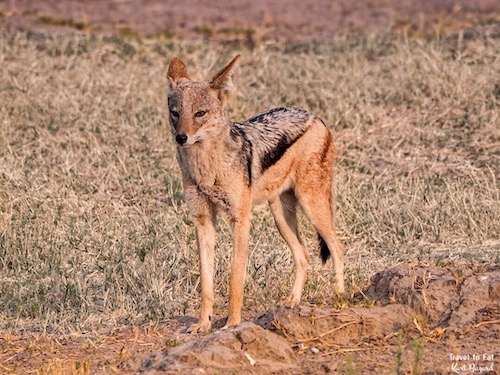
The slender Black-Backed Jackal (Canis mesomelas) is only found in Africa. This species has a discontinuous distribution range, and is found in two separate populations, one in East Africa and the Horn (East African jackal or Canis mesomelas schmidtiand), and the other in Southern Africa (Cape jackal or Canis mesomelas mesomelas). The black-backed jackal has occupied eastern and southern Africa for at least 2–3 million years, as shown by fossil deposits in Kenya, Tanzania, and South Africa. Specimens from fossil sites in Transvaal are almost identical to their modern counterparts, but have slightly different nasal bones. Wolves, dogs, and dingoes are subspecies of Canis lupus. Canis species too small to attract the word “wolf” are called coyotes in the Americas and jackals elsewhere, and specifically in Africa. The jackal’s ecological specialisation is similar to that of the coyote found in North America. Though it scavenges, it is also a proficient and well-respected hunter of smaller game.
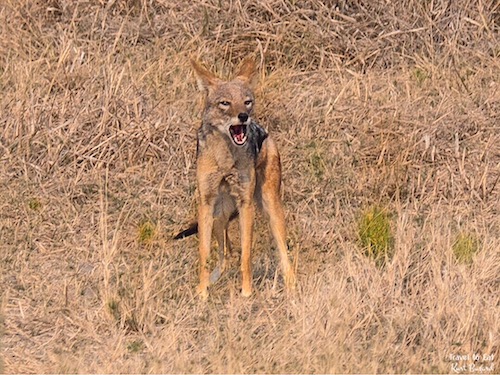
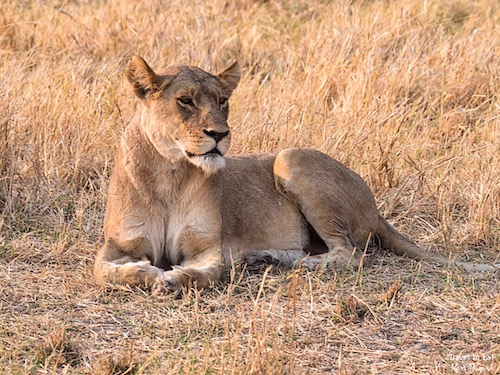
The black-backed jackal is easy to recognise by the black hair shroud that lines its back. The black mantle is patterned with specks of white giving it a silvery appearance. This jackal prefers dry savannas and semi-desert and is found exclusively in Africa, particularly Eastern Africa – Kenya, Tanzania, and Ethiopia, and Southern Africa – South Africa, Namibia, Botswana, and Zimbabwe. This jackal lives for about 7 years in the wild and for 14 years in captivity. The black-backed jackal is a monogamous and territorial animal. The basic social unit is a monogamous mated pair which defends its territory through laying feces and urine on range boundaries. Intruders are warned by sounds including yelling, yelping, woofing, whining, growling, and cackling. It expresses alarm through an explosive cry followed by shorter, high-pitched yelps, as it was doing here since the lioness shown above had decided to rest near the cubs.
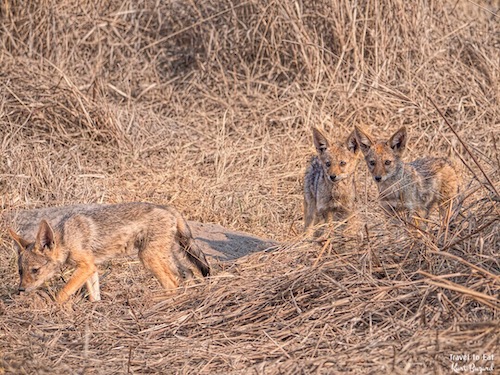
The mating season takes place from late May to August, with a gestation period of 60 days. Pups are born from July to October. Summer births are thought to be timed to coincide with population peaks of vlei rats and four-striped grass mice (found in large numbers in grasslands and savanna), while winter births are timed for ungulate (hooved animal) calving seasons. Litters consist of one to 9 pups, which are born blind. For the first three weeks of their lives, the pups are kept under constant surveillance by their mother (dam), while the father (sire) and elder offspring provide food. The pups open their eyes after 8–10 days and emerge from the den at the age of 3 weeks. They are weaned at 8–9 weeks, and can hunt by themselves at the age of 6 months. The pups from the previous year may stay on as helpers; creating an extended family unit. Both the male and female jackals take part in the rearing and feeding of the young. When the pups are still very small, food is regurgitated for them and later, as they mature, the food is carried back in the mouth and left for them to eat either inside or often near the entrance to the hole.
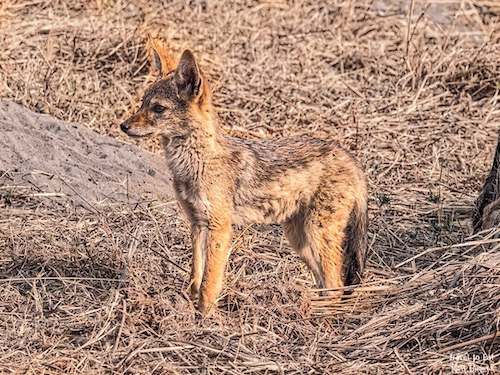
The black-backed jackal is omnivorous, eating almost anything that is available. It usually forages alone or in pairs. The hunting methods are variable; it normally pounces on insects, lizards and rodents, and pursues and subdues large prey. It has been seen to cooperate in larger groups to subdue difficult prey, up to the size of an adult impala or wildebeest calf. The group members take turns to harass cornered prey until it is exhausted enough to be subdued. It selects weaker animals to subdue, thus playing an important role in removing old or sick animals. It scavenges when carcasses are available. When meat is abundant, it takes small chunks and buries (caches) them for later use.
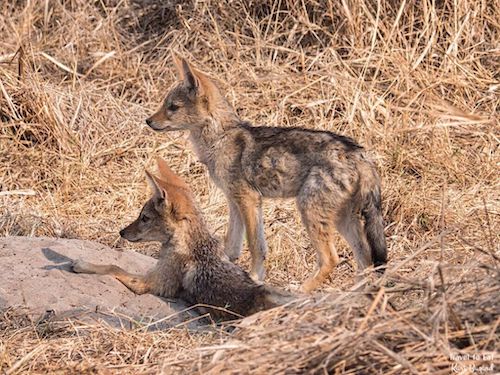
Although Black-Backed Jackals are at times also active during the day, they usually rest in holes dug by other species such as ant bears (aardvarks), in rock crevices or among piles of boulders, preferring this more substantial cover to that of bush or tall grass. Black-backed Jackals are mostly active at night and are often seen at dusk and dawn. In protected areas and reserves they are also active on cool overcast days, but in areas where they are persecuted by man they tend to be shy and hide away. Aardvarks inhabit grasslands, woodlands, savannahs and bush and they dig burrows for themselves which can be up to 10 m (33 ft) in length. They will have several burrows within their home range for refuge and one main one which is used for breeding. They will change the layout of their main burrow regularly and every so often they will dig a new one. You can see the fresh dirt from the tunnel in the above photos.
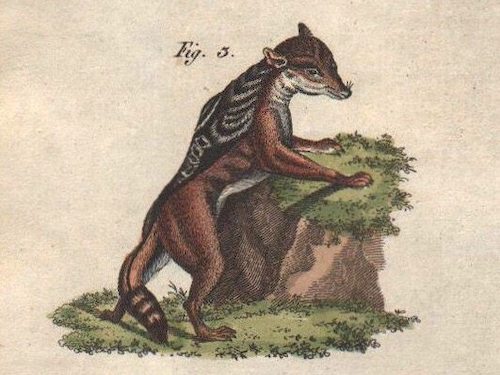
As always, I hope you enjoyed the post, I personally found the cubs adorable.
References:
Quadrupeds: Wild carnivorous animals: Copper Engraving, Colored by Hand, Bertuch 1790–1810

